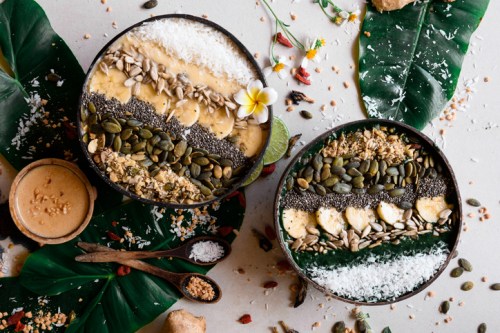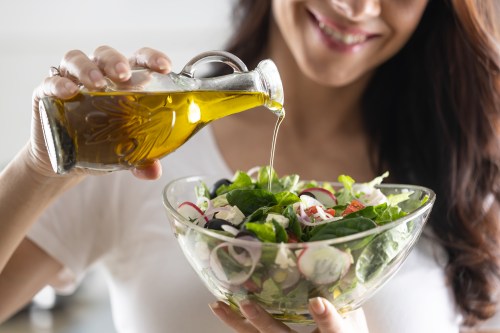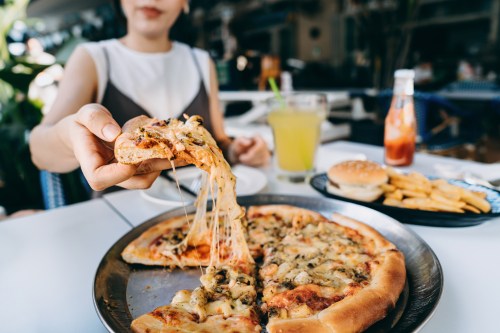In America’s ever-evolving quest to feel better and live longer, we’re constantly being met with new ‘superfoods’ that help boost longevity and overall wellness. In other parts of the globe, however, some of the foods that we’ve inaccurately deemed as ‘new’ or ‘trendy’ health-promoting ingredients (think: chia and flax seeds, quinoa, matcha, or acai berries) have been dietary staples for many millennia, many dating back to Indigenous populations.
Experts in This Article
Christa Jimenez is a San Ramon, Costa Rica-based recipe developer and blogger behind Pura Vida Moms.
Ella Davar, RD, CDN, is a dietitian that specializes in longevity.
Another prime example of a nutrient-rich ingredient we should be eating more of is the chan seed. Amidst the tropical greens of the Nicoya Peninsula of Costa Rica grows the chan plant, which produces this lesser-known seed. It has been a dietary staple for many of the Nicoyans for centuries, who are known as being some of the longest-living and happiest people on the planet.
Indeed, in addition to being one of the oldest settlements in Costa Rica, Nicoya is known as a longevity hotspot because it’s home to many residents who live to be more than 100 years old in good health. The lifestyle of the Nicoyans and the high number of centenarians has led Dan Buettner and his team of researchers to include Nicoya as one of the five Blue Zone regions of the world.
Many factors have been attributed to the Nicoyan’s longevity, from the ample sunshine and the residents’ strong social connections to their dietary habits. However, according to Ella Davar, RD, CDN, a dietitian that specializes in longevity, the Costa Rican secret to living longer also includes being mindful of effective ways to cope with and manage stress. “Costa Rica is famous for its pura vida, a pure way of living life in harmony with nature,” she says.
In addition to practicing stress management, another important anti-aging factor is that Costa Ricans consume a nutrient-dense diet centered on plants and locally-sourced ingredients. “The traditional Nicoyan diet is low in animal protein and consists primarily of maize corn, beans, tortillas, fresh fruits, vegetables, nuts, and seeds like chan, which are all among the more nutrient-rich foods linked to longevity,” Davar notes.
So back to chan seeds: Let’s take a closer look at chan seeds and the potential benefits of adding them to your diet.
What Are Chan Seeds?
The chan plant (hyptis suaveolens) is a plant native to Costa Rica and other parts of Central and South America. The plant has tiny flowers that produce grainy, black seeds that look and feel similar to the chia seed and boast an array of nutritional and medical benefits.
The Benefits Of Chan Seeds
The ancient Nicoyans (in addition to cultures throughout Asia, Africa, and the Americas) have used every part of the hyptis suaveolens plant, including its leaves and seeds, for centuries—both medicinally and for cooking. Clearly, it comes with a lengthy list of beneficial vitamins, minerals, and antioxidants.
For one, Davar says that chan seeds are rich in protein and essential amino acids. They’re also packed with longevity-boosting omega-3 and omega-6 fatty acids, potassium, fiber, calcium, iron, zinc, protein, and vitamins A, B, C, and E. (Can we get a mic drop?)
According to Davar, chan seeds are also high in magnesium, which has been associated with stress reduction, helping to maintain blood pressure and blood sugar levels, and reducing cardiovascular risk factors.
Finally, the mucilage properties of chan seeds also provide multiple benefits for the digestive system. This is why they’re often used as a traditional treatment for diarrhea and constipation, heartburn, and indigestion issues, Davar adds, in Costa Rica.
How To Incorporate Chan Seeds In Your Diet
1. Mix them into a beverage.
In Costa Rica, chan seeds are most commonly used in fresco de chan, a traditional drink in the region. The seeds are also excellent to use in herbal teas. “I also love to combine one cup of chan seeds in a liter of water and leave it at least half an hour to sponge,” says Christa Jimenez, a San Ramon, Costa Rica-based recipe developer and blogger behind Pura Vida Moms. “Then I add sugar, lemon, and ice, mix, and serve it with a traditional Costa Rican Casado lunch.”
2. Sprinkle them into other dishes.
Chan seeds can add an array of nutrients (and delicious crunch) to salads, smoothies, stir fry, and more. They make a great addition to the Costa Rican national dish gallo pinto, a flavor-packed combination of rice and beans that’s also filled with fiber, iron, and protein.
3. Use them as a thickening agent.
Chan seeds make an excellent thickener in various recipes—think of it as an egg replacement, similar to flax eggs. They can also be used in baking as a replacement for flour.
4. Make crackers.
Swap chan seeds in for the chia seeds in this delicious high-fiber cracker recipe to give your gut (and your taste buds) a healthy boost:
Oh hi! You look like someone who loves free workouts, discounts for cutting-edge wellness brands, and exclusive Well+Good content. Sign up for Well+, our online community of wellness insiders, and unlock your rewards instantly.
Sign Up for Our Daily Newsletter
Get all the latest in wellness, trends, food, fitness, beauty, and more delivered right to your inbox.
Got it, you've been added to our email list.











